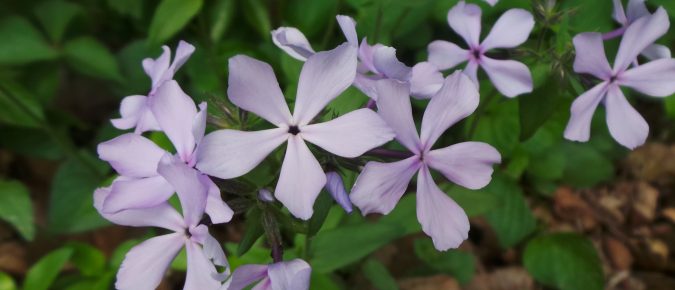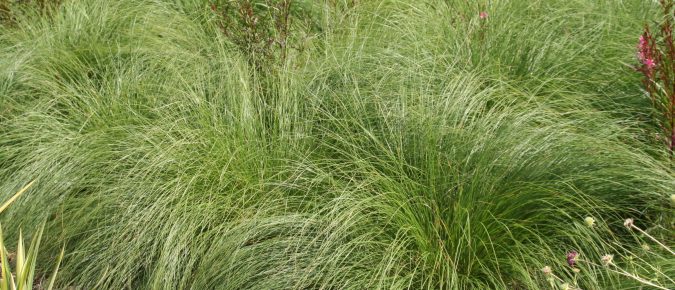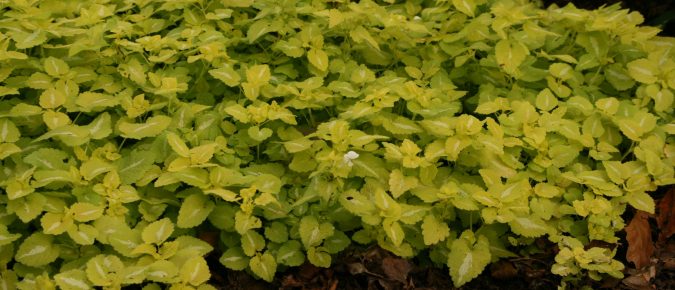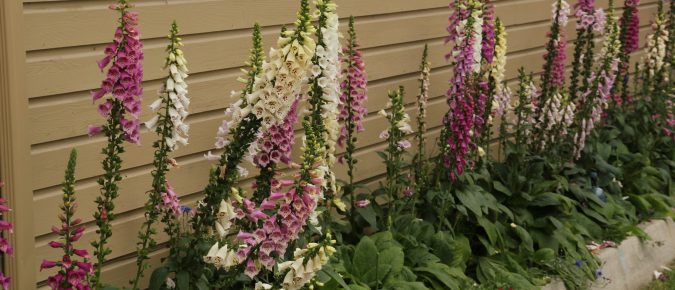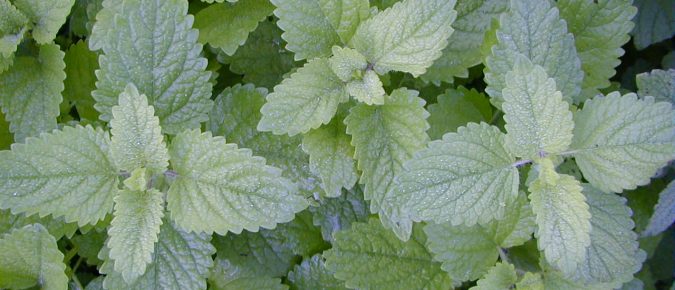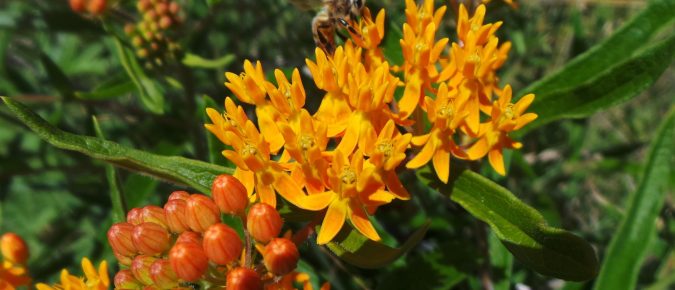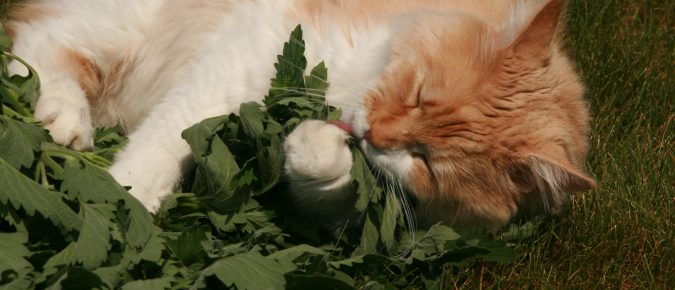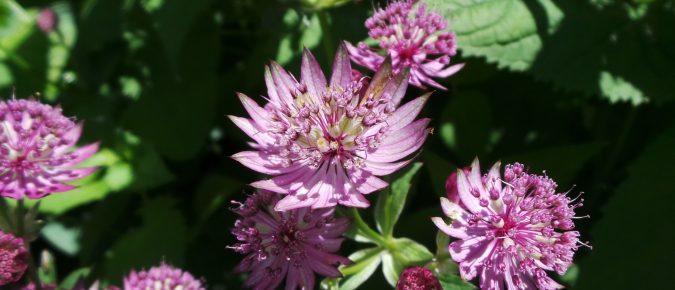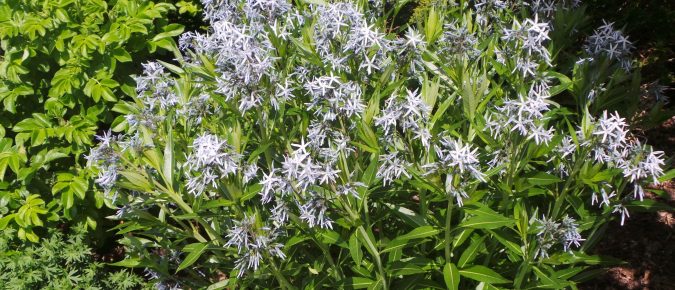For soft blue flowers in partly shady spots in spring, nothing beats woodland phlox. This North American native thrives in dappled shade and moist, well-drained soils. With an open, relaxed habit it fits well in informal shady beds, rock gardens and wild or naturalized areas. Learn more about this pretty late spring to early summer bloomer in this article…
One of the showiest prairie grasses, prairie dropseed (Sporobolus heterolepis) is frequently cultivated as an ornamental for its attractive fountain of fine textured, emerald-green leaves, delicate flower and seed heads, and colorful fall color. Learn more about this native ornamental grass that is a great addition to many landscapes in this article.
Many species of tropical gingers are grown for their flashy blooms, but the plants of culinary ginger aren’t particularly ornamental. Instead, culinary ginger is grown for the aromatic rhizomes which are the source of the hot, pungent flavor enjoyed in ginger ale, gingerbread and many Asian foods. Learn more about this tropical plant which is surprisingly easy to grow in containers…
With finely cut foliage that remains attractive through the growing season and conspicuous fruit which provide ornamental interest into the fall, red baneberry and white baneberry are two similar woodland plants that can be great additions to shady gardens. These species do have poisonous fruit, so need to be used with caution. Learn more about these native perennials …
Look no further than spotted deadnettle for a tough but showy groundcover. With variegated leaves that shine in shade and a long bloom time, Lamium maculatum is an eye-catching plant throughout the year. Choose from cultivars with green and white striped or silver leaves and white, purple or pink flowers. Learn more about this adaptable, low-growing perennial in this article…
With tall, showy spikes of tubular pink or purple flowers with speckled throats, common foxglove is a common addition to informal gardens for vertical interest. This biennial from Western Europe forms a rosette of leaves the first year and blooms in the second year. Learn more about Digitalis purpurea – the original source of the heart medicine digitoxin – but also considered an invasive weed in many places…
If you want to add some lemon zest to your garden, but can’t grow a lemon tree, consider trying some lemon-scented herbs or other plants. This article covers plants that have scents suggesting lemons.
With attractive flowers and foliage, Virginia waterleaf is an herbaceous perennial of moist deciduous forests that blooms a little later than most spring-blooming wildflowers in woodlands. The common name comes from the variable markings on the leaves which resemble water spots. Learn more about this native plant in this article…
Butterflyweed, Asclepias tuberosa, is a native milkweed offering brilliant orange flowers that attract a wide range of butterflies and other insects, including monarch butterfly caterpillars. Learn more about this tough, long-lived herbaceous perennial that makes a great addition to many types of gardens in this article
Although a bit weedy because it self-seeds readily, if you have a feline friend, catnip is must-have. This mint family member native to Eurasia contains a compound that is very attractive to most cats. The plant itself can be an attractive addition to the garden, especially when in bloom. Learn more about catnip in this article…
With small, unusual “pincushion” flowers in subtle shades of red, pink and white, astrantia or great masterwort, is a relatively uncommon perennial in American gardens. Growing in sun or partial shade it’s best suited to places where the flowers can be appreciated up close. To learn more about this perennial plant, read this article…
With pale blue flowers in spring, a large mound of foliage that stays bright green throughout the summer until turning yellow in fall, willowleaf bluestar is a great addition to any sunny garden. This low-maintenance perennial, native to the central US, is easy to grow and has few pest problems. To learn more about Amsonia tabernaemontana, read this article…

